I’m so pleased with this yummy gluten free Sweet Egg Bread recipe and I can’t wait to share it with you!
You may recognize this Eastern European Easter Bread known as Paska, or you may just recognize it as a beautiful braided bread; either way, you have to know how simple it is to make this iconic loaf gluten free with my recipe. You will want this on your Easter table, but you will probably want it throughout the year as well!
Moist, rich, sweet gluten free pull-apart braided bread that is so impressive and irresistible on the table. And I bet you think it takes a degree in pastry school to pull this off … but it absolutely doesn’t! I have a quick video and step-by-step photos to help you shape this gluten free sweet egg bread, so no worries!

In fact, I whipped these loaves out in an afternoon while taking photos of all the steps for you so you can do it with ease, and even after sitting out forever while I took pictures of this beautiful gluten free sweet egg bread, it was still soft and moist … even two days later!
So I can assure you that it will be one of you favorite new gluten free recipes, if for no other reason than to impress the socks off your family at your next gathering.

You may recognize the dough recipe I’m using for this pretty bread, as it’s the same as my gluten free challah dough. The directions for shaping are different, and this one offers that sweet jam and glaze twist, but the base recipe is still my very popular gluten free challah.
It’s one of my favorite recipes since it produces the most gorgeous, soft bread, and it’s so easy to work with.

Feel free to skip the jam and glaze if you want a slightly sweet bread but not the full throttle danish-style glazed and jellied bread. It’s still amazingly yummy served for dinner or sliced and made into French Toast. So many options.

And speaking of gatherings, it’s nearly Easter! You’re welcome, in advance, for this great new brunch option! If you’d like to peruse even more of our family’s favorite gluten free Easter recipes, have a look at my huge gluten free Easter Recipe Roundup!
Do you have a favorite family recipe you’d like to make gluten free? This article on converting recipes to gluten free should help — have a look and see how almost any recipe can be made gluten free with a few quick tips and my award-winning gfJules Flour.
It’s the closest thing to all purpose wheat flour you’ll find, with none of the grit or aftertaste gluten free flours are so infamous for. It brings back happy baking, I promise!

Also, for gluten free braided breads like this one, or for gluten free pastries, danish, homemade pasta, rolled cookies … my gfJules Flour is absolutely perfect because it adds stretch to doughs making them soft and pliable and able to be formed and wrapped and braided without crumbling to bits.
Try it and see how much easier your baking life can be just by switching one (very important) ingredient!
Be sure to watch my quick video for you to see the process of making this dough into pretty knots. I also have some step-by-step photos for you in the recipe but let me also tell you that there’s no way to get this wrong. If you follow the recipe and use my flour, the dough will be delicious, so shape it however you want to — it’ll be beautiful.
Wishing you and yours many blessings this Easter, and may all your gluten free baking bring you joy!
~jules

Here’s one more Easter twist on this gluten free Egg Bread from reader Sherry Varano. She braided my gluten free Challah Dough and dyed hard boiled eggs, then placed them in the bread before baking. What a festive presentation, don’t you think?


Gluten Free Sweet Egg Bread
Ingredients
Gluten Free Egg Bread Ingredients
- 7 - 8 + Tablespoons warm water (around 1/2 cup)
- 1 package (2 1/4 tsp) regular or rapid rise GF yeast (Red Star®)
- 1 tsp. granulated cane sugar
- 1 cup vanilla dairy or non-dairy yogurt at room temperature (I like So Delicious® Vanilla Coconut Yogurt)*
- 1 tsp. apple cider vinegar
- 5 large egg yolks at room temperature (slightly mixed)**
- 1/3 cup non-GMO canola oil or coconut oil (warmed to liquid) or extra virgin olive oil
- 4 Tbs. honey agave nectar or maple syrup
- 4 cups (540 grams) gfJules® All Purpose Flour
- 3 Tbs. + 2 tsp. granulated cane sugar
- 1 1/4 tsp. kosher salt
- 1/2 tsp. baking soda
- 2 tsp. baking powder
- 1 large egg mixed with 1 Tablespoon water for brushing on top
- poppy seeds sesame seeds, raisins, or other topping or mix-in (optional)
- jam or lemon curd (optional)
Glaze Ingredients
- 1/2 cup confectioners' sugar sifted
- 1-2 Tbs. milk of choice (dairy or non-dairy is fine)
- 1/2 tsp. pure vanilla extract
Instructions
- Preheat oven to 200º F, then turn it off; if you have a warming drawer, you may set that to low/moist setting instead.
- Prepare a baking sheet by lining it with parchment paper.
- If using regular yeast, in a small bowl, mix together the warm water (start with 7 tablespoons), yeast and 1 teaspoon of sugar to proof the yeast; set aside.
- In the bowl of your stand mixer, add the remaining wet ingredients and mix until combined. Whisk together the dry ingredients in a separate bowl.
- After 5 minutes of proofing, stir in the yeast-water mixture into the wet ingredients (note: if your yeast hasn’t bubbled at this point, throw it out and start again with fresh yeast). If using rapid rise yeast, it may be added in with the dry ingredients without proofing.
- Gradually stir in the dry ingredients until fully integrated, adding more warm water by the tablespoon while mixing, as needed, to make the dough soft so it's not tight or stiff — you should be able to pull the dough gently without it feeling tight or like it would bounce back — if it’s stiff, then add more warm water then mix 1-2 minutes more on medium speed.
- Using either method, once the dough is combined, divide it in half. The dough will be sticky, so use some gfJules® Flour on your hands and rolling surface (I like using a bench scraper like this one to help me cut and roll the sticky dough).
See photos above recipe card to follow along with the steps outlined below:
- 1 - Gently flatten one ball with palm of your hand and then roll out in every direction to spread the dough into a 1/4 inch thick circle. The circle and thickness doesn't have to be exactly even, so don't worry about achieving perfection here.
- 2 - Place a drinking glass in the middle of the circle, then use a knife or bench scraper to cut into quarters, like the 6, 9, 12 and 3 on a clock dial.
- 3 - Cut each quarter again into an even number of strips within each (6 is a good number of strips). Remove the glass.
- 4 & 5 - Take two adjoining strips and begin twisting gently until you reach the ends. Pinch together gently and wet slightly with water to help them join together at the top, then twist them into the middle to form a knot. Repeat with remaining strips until you have a bouquet of knots in the center covering the circle where the glass had been.
- In a small bowl, mix the extra egg together with 1 tablespoon water and brush all over exposed dough. Transfer gently to a parchment-lined baking sheet. Sprinkle the seeds or any toppings at this point. Repeat with second ball of dough.
- Cover the loaves with wax paper or parchment sprayed with cooking oil and place in a warming drawer set to low heat, or into the preheated oven (but turned off) for approximately 20 – 30 minutes. (Don’t expect the bread to rise much at this stage.)
- Once risen slightly, place the uncovered tray in an oven preheated to 350º F (static) or 325º F (convection) for 18-20 minutes or until a toothpick inserted into the center of the bread comes out dry, or with some crumbs attached but no wet dough.
- Remove to cool on a wire rack.
- Once cooled, make gentle indentations around the bread knots and place 1 tablespoon of jam inside each.
- Whisk together glaze ingredients and drizzle on top in a decorative pattern. (Add more or less milk, depending on the drizzling consistency you prefer -- start with less, as you can always add more.)
Video
Notes
** Please keep in mind that nutrition information provided is per serving, which may vary. While we have taken care to provide you with the most accurate nutritional values possible, please note that this information may differ significantly depending on the exact ingredients and brands that you choose to use to make this recipe. Additionally, where options are given for ingredients, the resulting calculation may include all ingredient options instead of only one per line, skewing the totals significantly.
Pin for later!
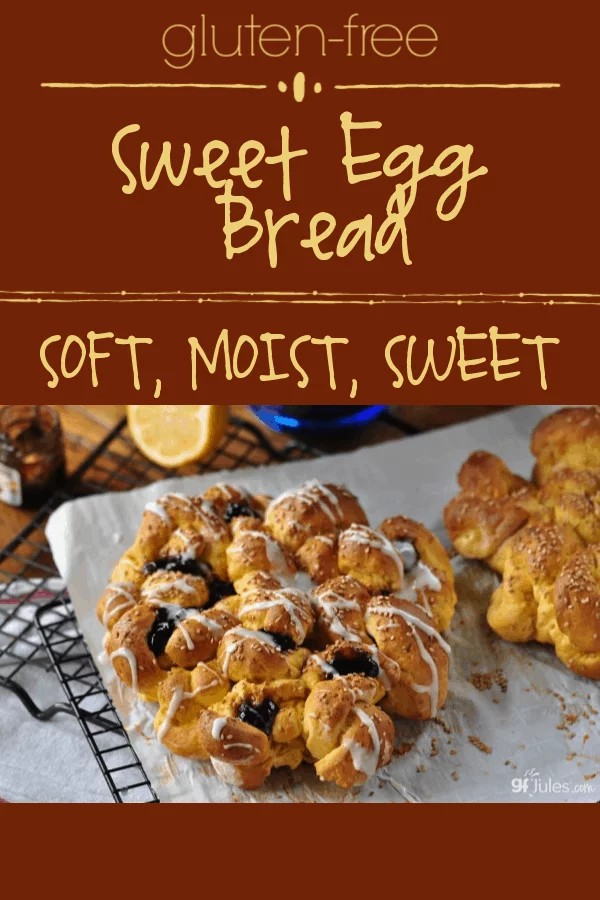




























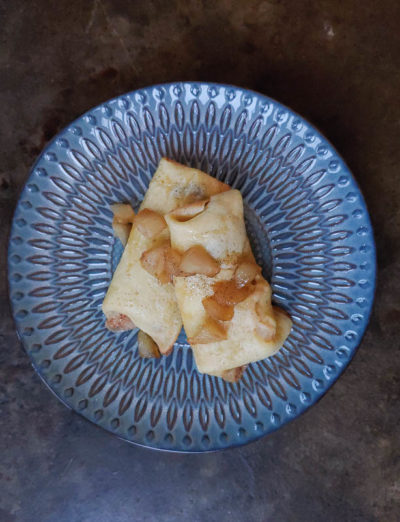
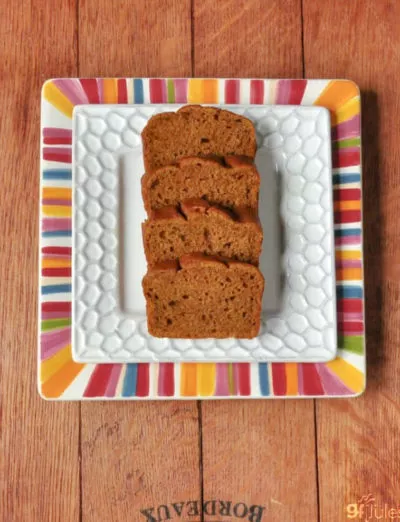

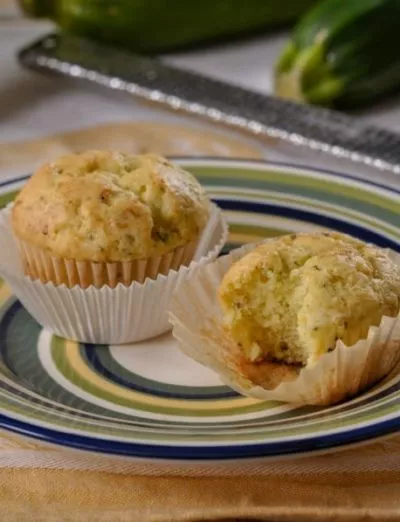






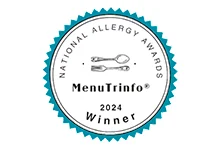
So many ads! Can barely see the content. Frustrating.
Hi Jeanne – I’m sorry that the ads were frustrating to you. There is a button at the top of every page where you can “JUMP TO RECIPE” and skip over any of the preceding information if you would rather just get to the recipe. The ads are there to support the cost of managing the free content here, and are a necessary evil, so to speak, but they are not supposed to frustrate. They are on everyone’s blog anymore, and are just something we are all used to, I guess. At least there is an option to get right to the recipe any time you like, and you can always print the recipe from there — and it’s all free for you!
~jules
This looks delicious, and I’m looking forward to making it soon! I just found your site and plan to look at more of your recipes. I was actually looking for a gluten free French brioche bread when this came up for me.
With the oven, it says to put the slightly risen dough into a preheated oven, but I only have one oven. Am I supposed to leave it in the oven while it heats up or leave it on the (cool) counter/stove while preheating to cook?
Hi Elle, so glad you found my site — enjoy the recipes!
Regarding the preheat step, take the risen dough out of the oven if you were using that to proof, but leave it covered with parchment while you bring your oven to temp. If you left the bread in the oven while it was rising, it would begin to bake the bread, but at the wrong temperature and would have a drying effect on the dough, and also you wouldn’t get as much oven spring from the rise when it goes into a hot oven.
~jules
I know this is an egg bread, however, I’m really allergic to eggs. Looked at the comments and the information in this recipe and didn’t see anywhere regarding an egg replacement. If information is there, my bad. Is it because it calls for 5 eggs, and this bread cannot be made with an egg replacement?
Hi Connie, I had another reader use 1Tbs. “Just Egg” product per egg yolk and it turned out beautifully, so I would give that a try!!!
~jules
I use your gluteen free flour blend,It is great other blends do not work for me .i just take a normal recipe and use your blend instead of flour works perfect, thanks
I’m so happy to hear it, Mary!!! That’s the way it’s supposed to work, and to give you the freedom to bake anything you like!!! Thanks for taking the time to write me a note and let me know!
~jules
I can’t get your flour where I live. Can I use cup4cup or bobs redmill?
Hi Megan, where do you live? We ship all over!! I’m not sure about those other blends, as all flour blends behave so differently; especially since this is a braided dough, I wouldn’t want to steer you wrong with a flour that would fall apart. Here’s more information about why all gluten free flour blends are so different and how you can compare to see if they might work.
Here’s our shop info as well, in case you want to look into having my flour shipped to you; we are also on Amazon.
~jules
Can I use fresh yeast instead of dry yeast? Never made Paska bread GF before and am very nervous. I used
Gfjules flour at Christmas for all my cookies and they all came out wonderfully. My family loved them, but since I was diagnosed w/celiac I’ve not made any traditional backed goods for Easter.
Hi Jeanne, you can use fresh yeast instead of dry, but it will require some slight modifications. Check out my article on yeast here for instructions. I find dry yeast much easier to work with, but it’s up to your personal preference, of course. I hope you feel confident with my gfJules Flour and recipes that your traditional Easter favorites will be wonderful, made gluten free! So happy to hear that your Christmas cookies were wonderful!!
~jules
Hi Jules, I have been using your flour and recipes for a while and have really loved the results. This Christmas I’m trying to replicate one of my mom’s old recipes we called Chocolate Petit Pans ( it was a simple sweet yeast bread – yeast, sugar, eggs, butter, milk, a-p flour) You rolled out small hunks of the dough after second rise , brushed with melted butter, placed squares of chocolate on it, and then folded the edges up tight, turned it over, let rise, etc. Do you think this bread recipe would work for that application or would one of your other recipes be a better choice to try? Thanks!
Hi Katie, I’m so glad to hear you’ve been loving my gfJules Flour and recipes so much — thank you for letting me know!!
Regarding this family recipe, I’m thrilled that you’re going to keep it alive, gluten-free! There are several good base GF bread options.
Can you tell me if the bread part of these Petit Pains is supposed to be a thin layer of bread or is it supposed to be thicker? Not sure the proportion of bread:chocolate you’re going for.
One thing I will definitely note with gluten free bread doughs is that you will not allow that second rise; be sure to roll out the dough and lay the chocolate etc and then let the dough rise, whatever recipe you use. All the other rise, punch down, second rise steps were to exercise the gluten (which we don’t have here!) so don’t do those steps! Check out this gluten free bread baking article for more info!
Let me know a bit more about the kind of bread you’re looking for and how thick it should be and I’ll try to help you pick the best recipe!
~jules
Hi Jules, If I made the braided bread like Sherry Varano did in the picture, how would I do that instead of your knots?
Thanks,
Nancy
Never mind, Jules! I found your Challah bread recipe that’s braided. Thanks
Great! So glad you found it, Nancy! ENJOY!
~jules
Hi Jules,
This recipe looks awesome. I’m very new to GF baking and have a few quick questions: If I don’t have a stand mixer, would I knead the dough instead? I was planning on using your recipe to make into “spring chicks,” where I would knot the dough. Do you think it would work well? Thanks for your help!
Hi Nadya, I’m so glad you’re excited to make this recipe! If you don’t have a stand mixer, you should be able to mix in a bowl with a large wooden spoon and do some kneading as well, but it’s not going to be like a gluten dough that you’ll be punching down and kneading. Have a look at this article on gluten free bread doughs for more information. As for knotting the dough, if you’re using my gfJules Flour, you should be able to braid and knot the dough because it will have some stretch, but again, isn’t exactly like a gluten dough with loads of bounce back, so it will take some getting used to, but I definitely think you can make chicks with it!
~jules